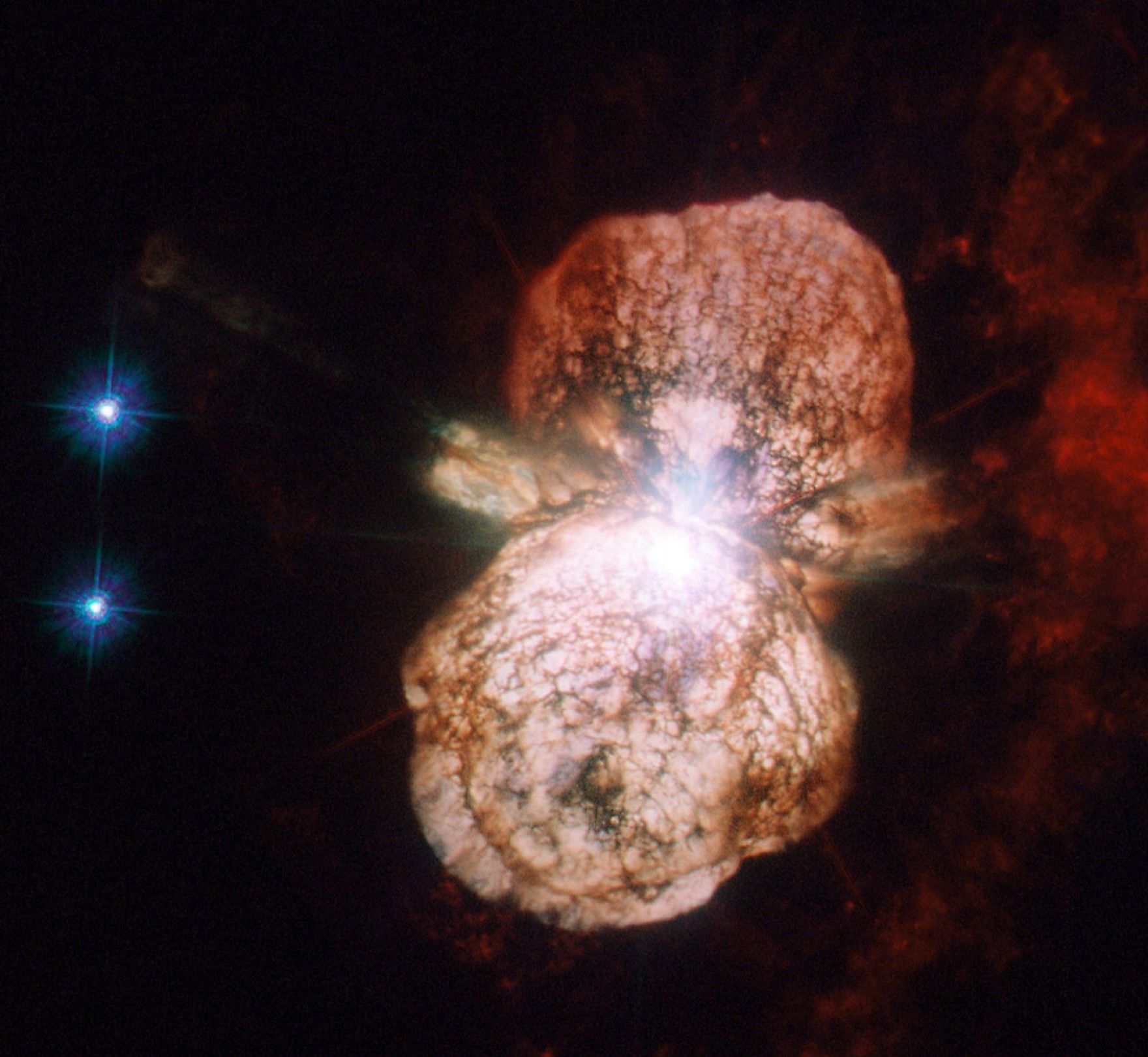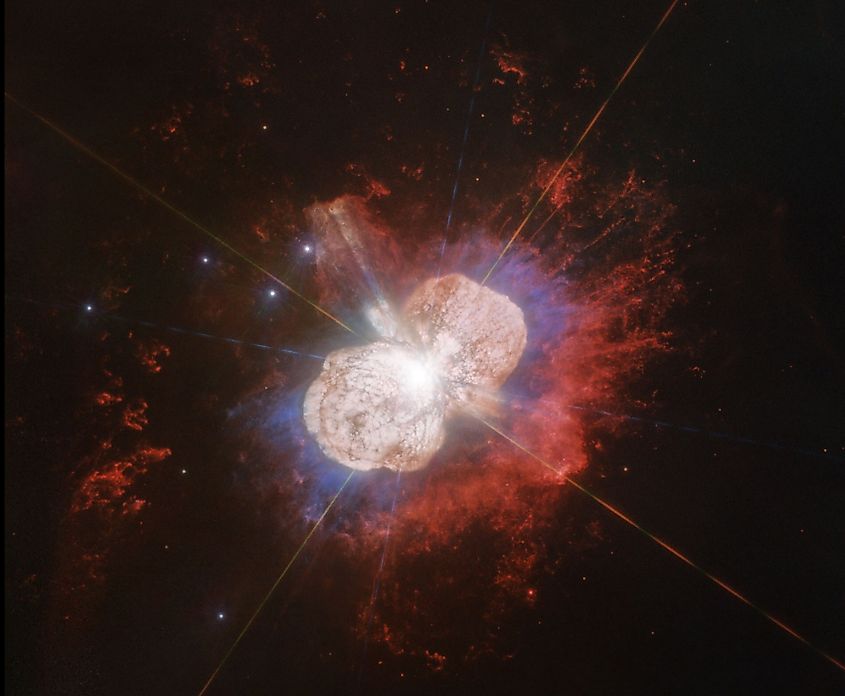
The Star Eta Carinae
Our sun is a relatively stable star. Other than Earth-sized flares and solar storms, the sun is stable enough for life to evolve and flourish on our world. However, not every star is as lucky as our sun. Located some 7,500 light years away in the Carina Nebula lies one of the strangest stars systems in our galaxy. Called Eta Carinae, it is a binary star system composed of two massive blue stars, both of which are many times larger and more massive than our sun. It was once assumed that Eta Carinae was a single star with a mass of nearly 200 times that of the sun. However, in the early 2000s, astronomers verified that the Eta Carinae system is composed of two separate stars in orbit around each other. Eta Carinae A is the primary star, having a mass of around 100-120 solar masses. The secondary star, Eta Carinae B, has a mass of around 60 solar masses. As a binary system, both stars orbit around each other in a gigantic ellipse, completing one orbit every 5.5 years. During their closer approach, they can be about as far away from each other as Mars is from the sun. During their furthest approach, they can be as far from each other as Neptune is from the sun.
Potential Supernova

Eta Carinae A is known as a variable star, meaning its brightness and energy output can change drastically in a short period of time. Interestingly, in 1843, Eta Carinae A became one of the brightest stars in the galaxy when it began erupting a tremendous amount of material into space. During this eruption phase, Eta Carinae A lost the equivalent of one sun worth of mass every year. Since the eruption took place, Eta Carinae A is estimated to have lost around 30 solar masses. Eta Carinae A has dimmed since this eruption, yet its brightness still varies from time to time. The material ejected during that eruption has also hidden the star from view in a dense cloud of stellar material. Astronomers believe that Eta Carinae A is one of the most likely stars to go supernova in the near future. It is estimated that within the next 500,000 years, Eta Carinae will explode in a mighty supernova, emitting so much energy that it will likely outshine every star in the Milky Way. Given its distance of 7,500 light years, the explosion could outshine a full moon and be visible during the day. After Eta Carinae A goes supernova, it will likely form a black hole. Interestingly, the amount of radiation emitted from the supernova could have potential effects here on Earth. Although our atmosphere will largely protect living things on the surface, the upper atmosphere and anything in orbit may be affected. Satellites and astronauts in orbit may be at risk, and our ozone layer may also become damaged as a result of the distant supernova. Thankfully, we have a long time to prepare for such an event.











